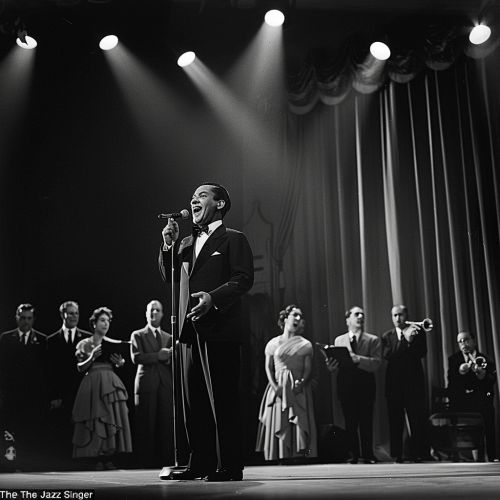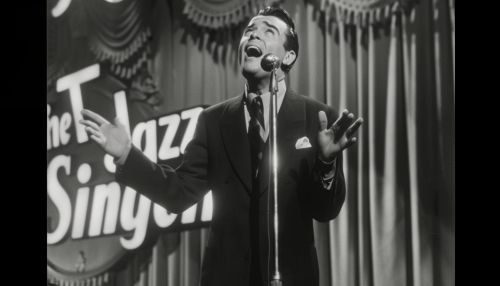The Jazz Singer
Overview
"The Jazz Singer" is a landmark film in the history of cinema, often credited as the first feature-length motion picture with synchronized dialogue sequences. Released in 1927, it marked the transition from silent films to "talkies," revolutionizing the film industry. Directed by Alan Crosland and produced by Warner Bros., the film stars Al Jolson, who plays the lead role of Jakie Rabinowitz, a young man who defies his family's traditions to pursue a career in jazz music.
Historical Context
The late 1920s was a period of significant technological advancements in the film industry. The introduction of sound-on-film technology, particularly the Vitaphone system developed by Western Electric and Bell Telephone Laboratories, allowed for synchronized soundtracks to be played alongside the film. This innovation was pivotal in the creation of "The Jazz Singer."
The film industry was also undergoing a cultural shift, with jazz music gaining popularity across the United States. Jazz, characterized by its improvisational style and African American roots, was becoming a symbol of modernity and cultural change. The film's release coincided with the Harlem Renaissance, a flourishing of African American culture in the arts.
Plot Summary
"The Jazz Singer" follows the story of Jakie Rabinowitz, a young Jewish boy who dreams of becoming a jazz singer, despite his father's wishes for him to follow in his footsteps as a cantor in the synagogue. Jakie's passion for jazz leads him to run away from home and adopt the stage name Jack Robin.
Years later, Jack achieves success as a jazz singer, but his career creates tension with his family, particularly his father. The film's climax occurs when Jack must choose between his career and his heritage, ultimately performing a rendition of "Kol Nidre" in his father's place during Yom Kippur services.
Production
The production of "The Jazz Singer" was a significant undertaking for Warner Bros., a studio that was not considered a major player in Hollywood at the time. The film's success catapulted the studio into the forefront of the industry.
Al Jolson, a popular entertainer known for his performances in blackface, was cast in the lead role. While his portrayal of Jack Robin was praised, the use of blackface has since been criticized for its racial insensitivity. Despite this, Jolson's performance was a key factor in the film's success.
The Vitaphone system used for the film's sound sequences involved recording the audio on phonograph records, which were then played in sync with the film. This method was soon replaced by sound-on-film technology, but it was instrumental in the early days of sound cinema.
Cultural Impact
"The Jazz Singer" had a profound impact on the film industry and popular culture. It demonstrated the commercial viability of sound films, leading to the rapid decline of silent films. The success of the film prompted other studios to invest in sound technology, accelerating the transition to talkies.
The film also highlighted the cultural tensions between tradition and modernity, a theme that resonated with audiences of the time. The portrayal of jazz music as a symbol of modernity and cultural change was significant, reflecting the broader societal shifts occurring in the United States during the 1920s.
Critical Reception
Upon its release, "The Jazz Singer" received widespread acclaim from both critics and audiences. The film's innovative use of synchronized sound was particularly praised, with many reviewers noting the emotional impact of hearing Al Jolson's voice.
However, the film's use of blackface has been a point of controversy. While it was a common practice in entertainment during the early 20th century, it is now recognized as a racist and offensive portrayal of African Americans. This aspect of the film has led to a re-evaluation of its legacy in recent years.
Legacy
"The Jazz Singer" is often cited as one of the most important films in the history of cinema. Its success paved the way for the widespread adoption of sound in films, fundamentally changing the industry. The film's influence can be seen in the rapid development of sound technology and the emergence of new genres and styles of filmmaking.
The film has been preserved in the United States National Film Registry by the Library of Congress for its cultural, historical, and aesthetic significance. It remains a subject of study for film historians and scholars, who examine its impact on the industry and its reflection of the cultural dynamics of the 1920s.
See Also
Categories


